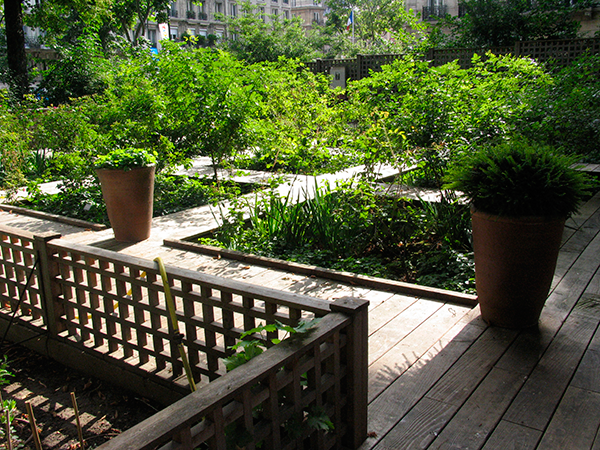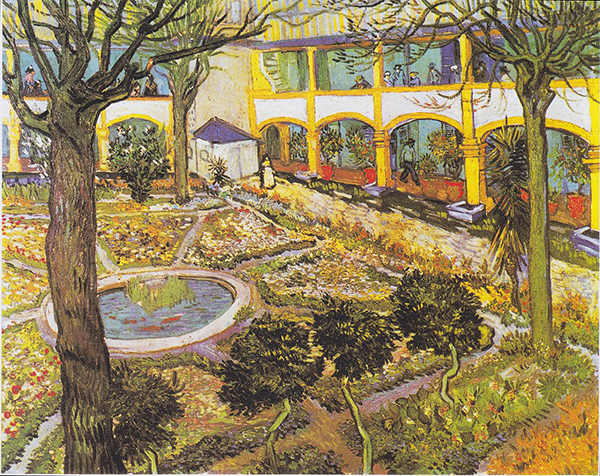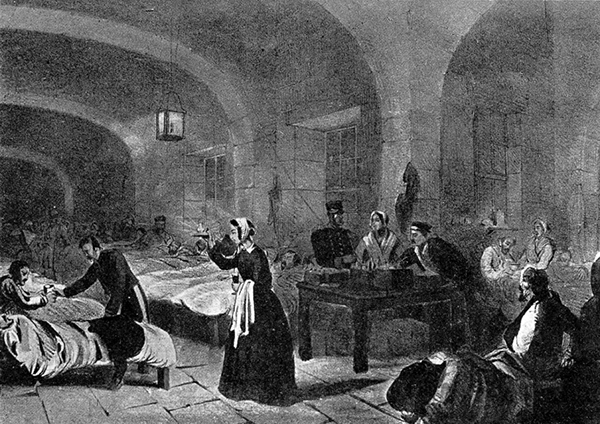HEALING GARDENS AND GARDENS FOR WELL-BEING
Gardens in hospitals in history
The conviction/intuition that contact with plants and gardens was of benefit to patients in hospitals has far-off origins. We find excellent examples of them as from medieval times when various “hospitalis” were set up in Western Europe to take in and tend patients. Above all those in monasteries included elaborate gardens for the purpose not only of supplying herbs for medicaments, but also of being a pleasant distraction from the sufferings for which, very often, there was no remedy.
Writing about the sensorial pleasures he experienced in the garden of
the hospice of Clairvaux in France (Cooper
Marcus, Francis, 2011), St Bernard (1090-1153) emphasized the
benefits and the therapeutic effects of being in contact with green
plants, scents, birdsong and privacy – all elements indicated eight
centuries later in the manuals on designing healing gardens.
With the
decline of the monasteries many of their magnificent gardens were lost,
but some of the main European hospitals, at Paris, Pisa, Trieste or
Vienna, carried on the tradition in the ensuing centuries.
Before the middle of the Nineteenth century caring for patients in their own homes was preferred to putting them in hospital because of the extremely high death rates among patients. A hospital was the emblem of almost certain death. The relation between an illness, its cause and its cure was not yet properly understood, and it was only after the birth of the theory of germs that a hospital started to be viewed as a place in which to be cured and to return to a normal state of health (Cooper Marcus, Francis, 2011).
This change in perception quickly led to a radically new approach to the design of hospitals. Priority was given to avoiding, or at least diminishing as far as possible, the risk of proliferation of germs and of contagion among patients. But at the same time the results obtained by Florence Nightingale (Sternberg, 2009), the pioneer of nursing theory and practice, led to an understanding of the extreme importance of sunlight and air for the well-being of patients and their cure. Thus, in the course of the twentieth century numerous airy, clean hospital wards were created, often with an adjacent garden or court yard. Taking patients out into the open air, especially those suffering from tuberculosis or psychiatric complaints, became the rule and formed part of the treatment. Also the cultural trend of Romanticism with its fascination for nature participated in this positive rethinking about the effects of nature on mental and physical health.
After the second world war the growing emphasis on costs-benefits and the progress made in building construction with more and more vertical structures led to a further change in hospital design. The hospitals with just two or at most three floors of the preceding decades were substituted by multi-storey buildings without balconies, terraces or gardens, often with windows that cannot be opened and with artificially recycled air. The rooms were increasingly bare, anonymous and cold, and in the 1970’s hospitals looked like big, gloomy office buildings (Cooper Marcus, Francis, 2011). Then as time passed, in some countries they started to substitute this system with hospitals with more and more emphasis on comfort and often also provided with green areas, but nevertheless still with only a few directors who realize the importance that a garden can have in the process of getting well, and therefore also in the final calculation of the costs-benefits and the hospital budgets.
Fortunately, thanks to the recent discoveries of the undoubted
connection and mutual interdependence between mental and physical
well-being, the approach towards illness is changing, and it is no
longer viewed as a mere “deviation from the norm of measurable
biological variables” (Braibanti,
Zunino, 2010, p. 179) in which the physical nature of a human being
is regarded as parallel to his mental part without any possible points
of convergence. The discoveries of the links between the nervous,
endocrinological and immunological systems (Bottaccioli,
2011; Borghi, 2007) show
beyond any reasonable doubt that physical well-being, and thus also the
healing of a body, is strongly linked with or actually dependent on
mental well-being.
This well-being, as results from numerous
researches (Baroni, 2008;
Bottaccioli, 2011; Borghi,
2007), is strongly connected with the environment in which we live.
This has led in recent times to more and more frequent rethinking of the
spaces dedicated to cures and a reconsideration of the importance of
green spaces within them.


